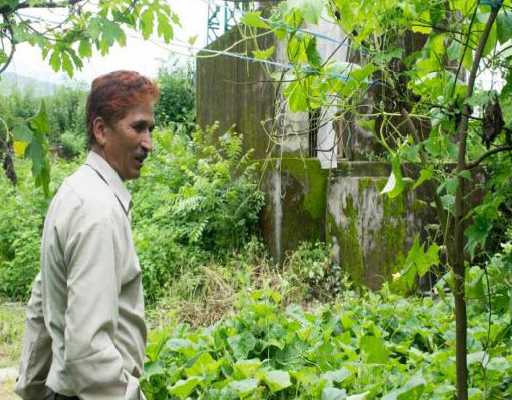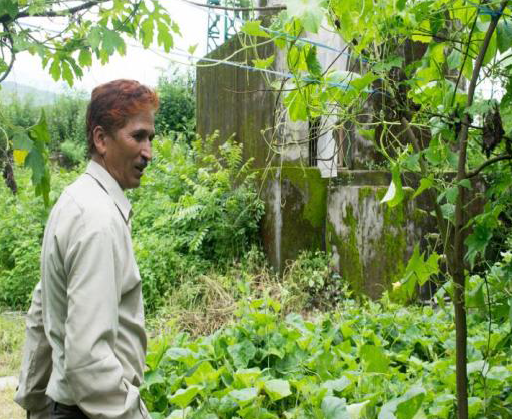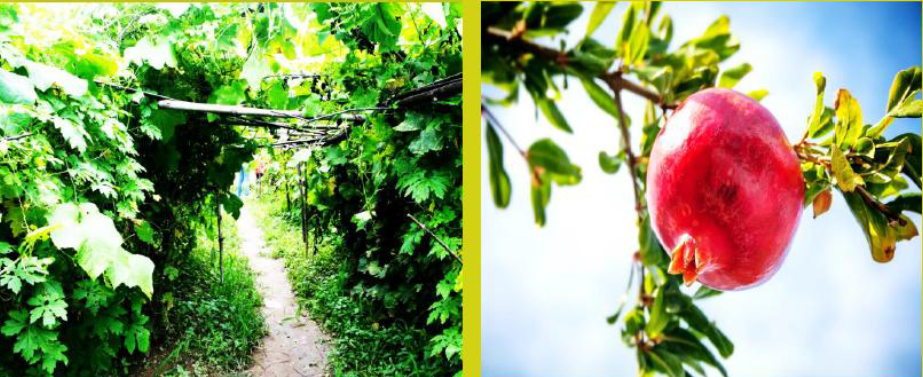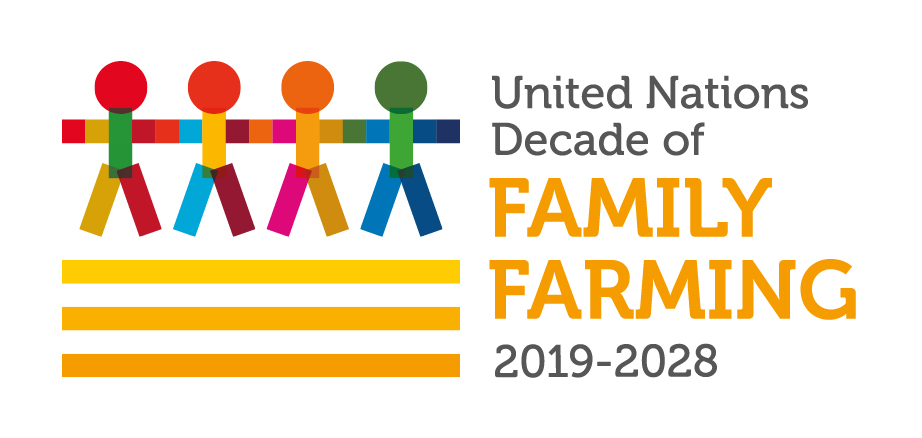Bahadur Singh Kandari and his family live in Deghat village in Almora District at an altitude of 1,200 meters. He used to take up private job assignments but due to lack of employment opportunities, he got intensively involved in agriculture in 2005. He has been involved in agriculture for a decade now.
He leased a plain land near the riverside which is more fertile and has fewer irrigation problems. He initially started with tomato cultivation, and then gradually moved on to cultivating other vegetables, cereals, and pulses such as bottle gourd, cauliflower, ridge gourd, corn, paddy, green chili, capsicum, and pumpkin. Bahadur claims that in vegetable cultivation, although he may not earn profits, there is no loss.
He procures seeds from the GB Pant Agriculture University and from Haldwani. He has developed good contacts with the agriculture scientists at the university which is of huge help to him. If he has queries on pest attacks, diseases in plants, and various new varieties of fruits and vegetables, he can immediately discuss it with the scientists. He deploys technology, he uses Whatsapp, in sending them the pictures of the problems on his farm and asks for possible solutions. These communications help him in immediately solving the diseases and thus, increasing the quality and quantity of his production.
Bahadur also started cultivating fruits, particularly pomegranate and confidently claims that it generates a rich income. But before deciding which to cultivate, he did a comparative analysis of pomegranate and mango.
| Type of Fruit | Land Size Required (for 1 Plant) | Market Price | Pesticide | ||
| Mango | 10 meters | Fluctuates | The size of the tree being huge, it cannot be sprayed with fertilizer leading to attack by animals, insects, etc. | ||
|
3-4 meters | Good price throughout the year
|
Small size ensures that it is easy to maintain and control pest attacks |
In the past three years, Bahadur experimented with another variety of mango called Amrapali—the seedlings he purchased from Kumauni Nursery-Ramnagar at INR 50/- per seed. During the first year, one tree yielded 40 mangoes, but in the second year, it dropped to 26 mangoes. It further fell in the third year. Otherwise, according to him, this variety is very good compared to others because it is small and can be grown on a rooftop. It can also be covered with a net to protect it from insects and wild animals.
The table below gives a holistic understanding of Bahadur’s vegetable and fruit production and his earnings from these over the years.
|
2005 | 2014 | 2016 | ||||
| Vegetable Production
|
Cultivated only tomato
Land size – 15 naali |
Cultivated cucumber and bottle gourd along with increasing the area of cultivation of tomatoes
|
Cultivated capsicum, cucumber, tomato, bottle gourd and ridge gourd
|
||||
| Fruit Production
|
Did not cultivate (but had mango trees earlier)
|
Started cultivating pomegranate (produced
4 to 5 quintal per annum) |
Cultivated pomegranate and Amrapali mango
|
||||
| Total Income | INR 50,000
|
INR 5 to 7 lakh
|
INR 6 to 8 lakh
|
Bahadur has his own truck for carting his produce from the farm to the market located 120 kilometers away at Ramnagar.
As the river flows nearby his land, he has made canals as well as installed a motor pump for irrigation purposes and does not require sprinklers and other tools.
For manure, he buys goat manure at INR 100 per quintal. He also prepares his own vermicompost.
As a hobby, he teaches his children how to sow seeds, irrigate, and harvest the produce so that they learn and help him in the field. This not only equips his children with the necessary knowledge and interest but reduces his labor charges as well.
Along with vegetable cultivation, Bahadur rears cows and buffaloes. Earlier, he had more than 10 cows (Jersey and Saiwal breeds) and buffaloes which produced 1 quintal of milk. He purchased these cows from Punjab. After attending various training on making value-added products of milk at GB Pant Agri University, he processed the milk and made paneer which he sold locally. But because there is low demand, he later stopped it. He used to sell the paneer at INR 180 per kilogram. He says that in preparing one kilogram of paneer, 8 liters of cow’s milk is required, but using buffalo’s milk only requires 5 liters. However, as the process of rearing cattle requires intensive labor, investment, and time, he could not focus on his other tasks. Thus, he discontinued it and is currently having only one cow and one buffalo to take care of his household consumption.
“Cultivating different vegetables throughout the year and changing the crops helped me maintain soil fertility. I always counsel leasing land near the roadways and the river to nullify problems of wild animal attack and irrigation,” Bahadur shares.
Bahadur plans to lease out more land and cultivate fruits on a larger scale as he finds fruit cultivation more profitable. He intends to opt for pomegranate cultivation along with dairy farming (once he employs laborers). With dairy farming, milk will be processed and other value-added products such as ghee, paneer, butter, buttermilk, and curd will be produced and marketed. #






Comments are closed